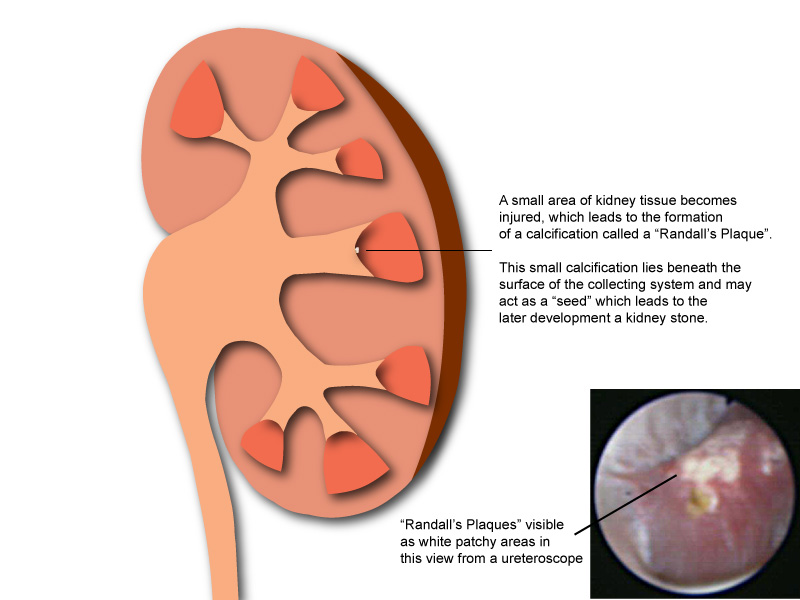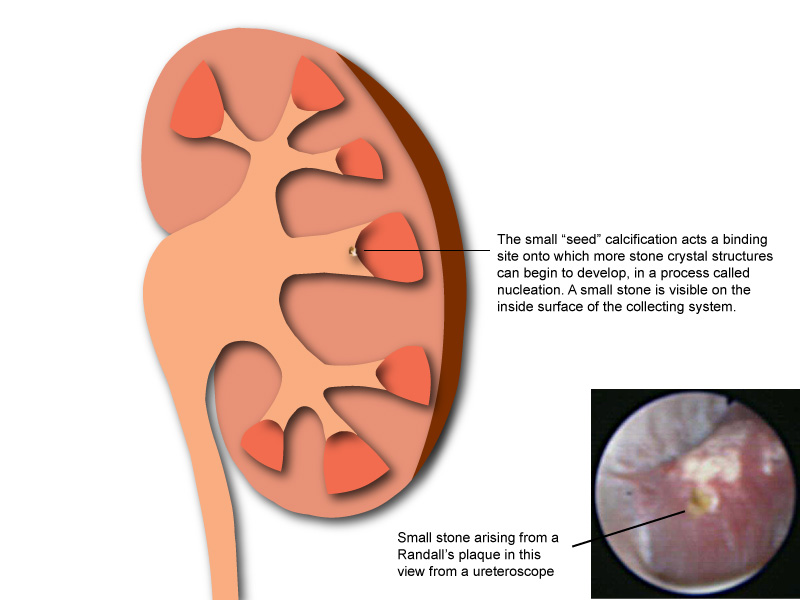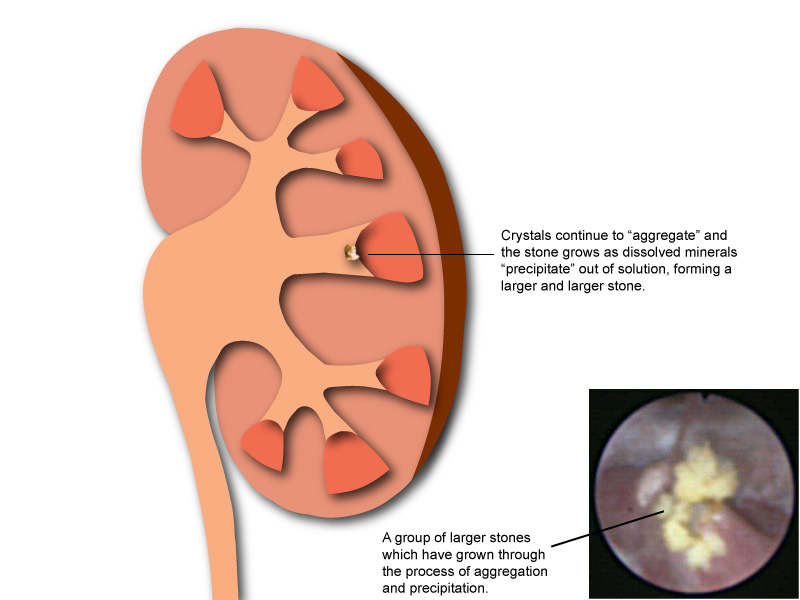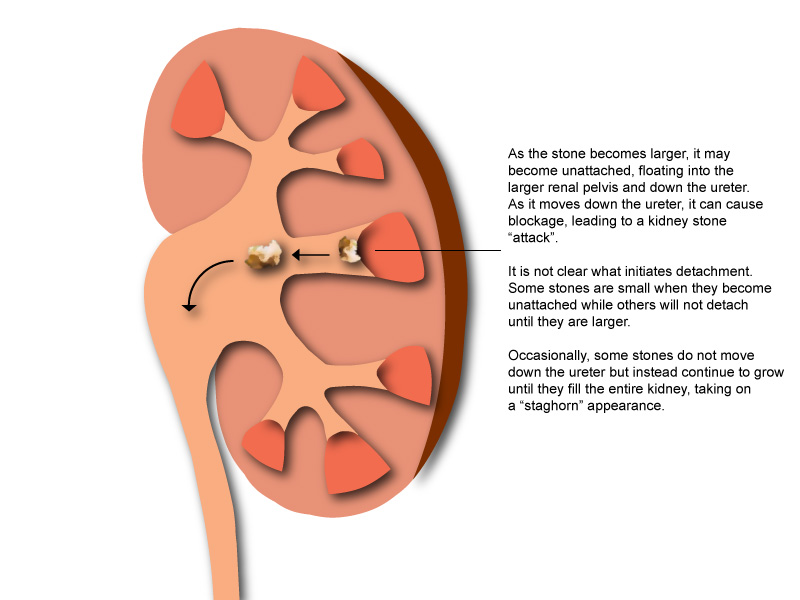How Do Kidney Stones Form?

Kidney stones are formed from substances known as soluble salts. Calcium oxalate-the most common type of kidney stone, is a soluble salt. It can exist in a dissolved form or in a solid, crystalline form.
When the concentration of a soluble salt in solution is high enough, it will begin forming into solid crystals, in a process known as precipitation. An example of a common soluble salt is sodium chloride in seawater. When seawater is allowed to stand and evaporate, the previously dissolved sodium chloride precipitates out of solution in the form of sea-salt.
Urine contains many chemical elements that can also combine to form soluble salts. These chemicals normally remain in a dissolved form in urine. Surprisingly, the concentrations of these salts in urine are usually much higher than what could remain dissolved in pure water. This unusual situation can occur because of the presence of inhibitors in urine that make it more difficult for soluble salt crystals to develop.
Some kidney stone inhibitors are substances from our diet, such as citrate, while others inhibitors are proteins manufactured by our bodies to help prevent the development of stones. Two examples of inhibitor proteins made by our bodies include Tamm-Horsfall protein and nephrocalcin.
Kidney stones initially form in a process known as nucleation when the factors encouraging salt crystals to develop outweigh the factors inhibiting salt crystals to develop. These crystals will continue to get larger over time and result in a detectable kidney stone if the conditions in urine remain favorable for stone formation.
Other important factors that affect the development of kidney stones include the amount of urine a person makes, with lower volumes leading to more concentrated urine, and the presence of slowed drainage, which can make it easier for crystals to gather and combine. The presence of a binding site can also make it easier for stones to start forming by acting as an “anchor” for crystals to develop on. A natural binding site is thought to be the small calcification that can develop in kidney tissue known as “Randall’s plaques”.





